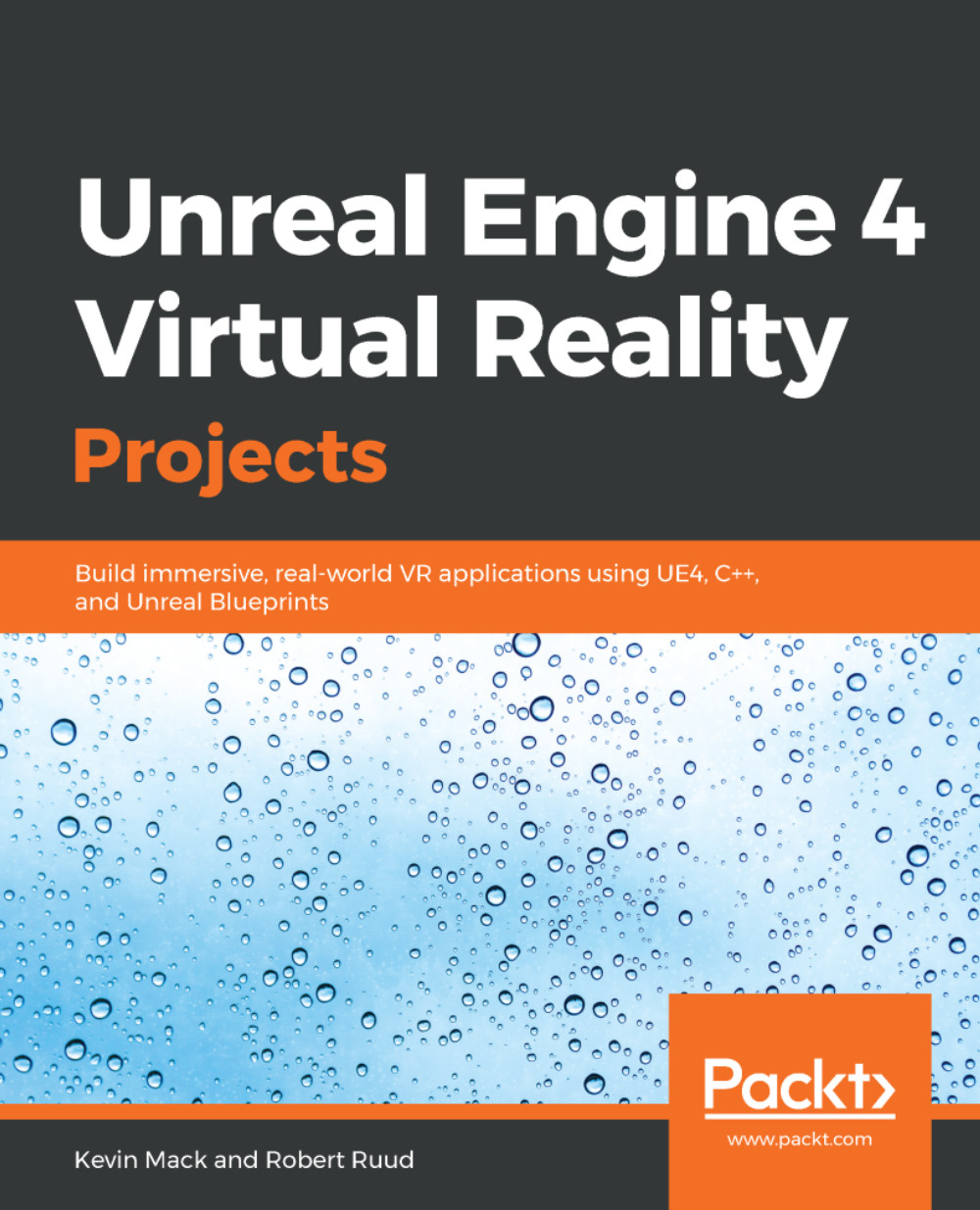In the previous chapter, we learned how to make our player character move using teleport locomotion and then by adding a more immersive seamless locomotion scheme. We gave our users feet. Now, in this chapter, we're going to give them hands.
We'll start out by creating a new project using assets from the Marketplace to explore another way of starting up a VR project, and then we'll take the VRPawn we built in the preceding chapter and migrate it into this new project. Once we're set up, we'll begin by adding hands to the VRPawn and exploring ways of interacting with objects in the world.
This is important. As humans interacting with the world, we're most conscious of the way things appear as we look around, but we're nearly as conscious of our hands and what they're doing. VR developers call...


